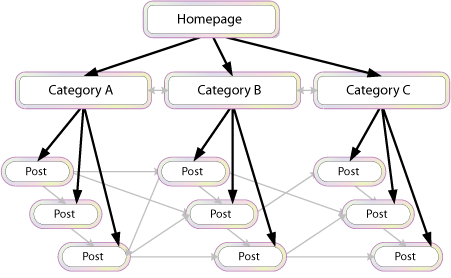
Quick Guide to Internal Linking
The online Search Engine Watch website has published a guide to internal linking which we thought could be of interest to our website visitors. The practice of internal linking has many advantages, that can help your site improve its metrics and the user experience.
1) Internal links can help navigate people around your site in a more targeted fashion.
2) Internal links can keep people on your site, particularly if the links are relevant to that particular webpage.
3) They provides your audience with further reading options, and if they continue to click around your site without leaving, this can help reduce your bounce rate (the percentage of people who left a given page on your website without viewing any other pages.)
4) Internal links help Google crawl and index your site. The Google bots that are sent out to fetch new information on your site will have a better idea of how useful and trustworthy your content is, the more they crawl your internal links.
5) Search engines will see that some of your webpages have more internal links pointing towards them than others, and will therefore judge them as more important.
6) The higher the authority of a page on your website, the more valuable its internal link becomes.
7) According to Starcom’s Jason McGovern, internal linking is one of the few methods we can use to tell Google (and visitors) that a particular page of content is important.
From a strategic perspective, it helps webmasters bridge the ‘authority gap’ between their most link worthy content and their most profitable content. For instance you can use a link from an evergreen post with lots of search visibility and traffic to promote something relevant your business needs to raise awareness of.
8) Broken links send a bad trust signal to Google, as it makes your site look incompetent or irrelevant at best, poorly maintained or abandoned at worst.
Considering Anchor text
9) By using clear anchor text (the clickable highlighted words in any give link) it helps improve your ranking for certain keywords. If we want this article to rank for the term ’internal link guide’ then we can begin linking to it from other posts using variations of similar anchor text.
This tells Google that this post is relevant to people searching for ‘internal link guides’.
10) Some SEOs recommend varying the anchor text pointing a particular page as Google may see multiple identical uses as ‘suspicious’.
To view the complete article click here: Search Engine Watch.







